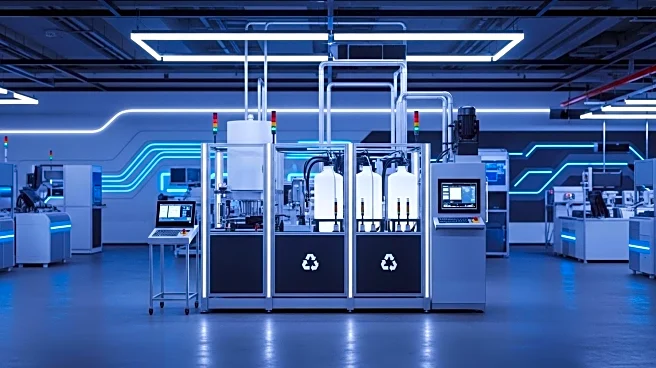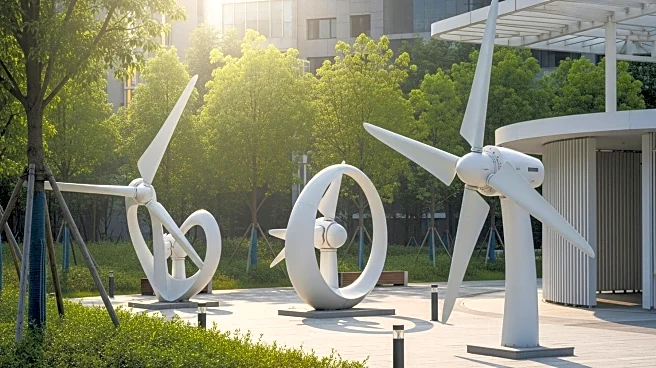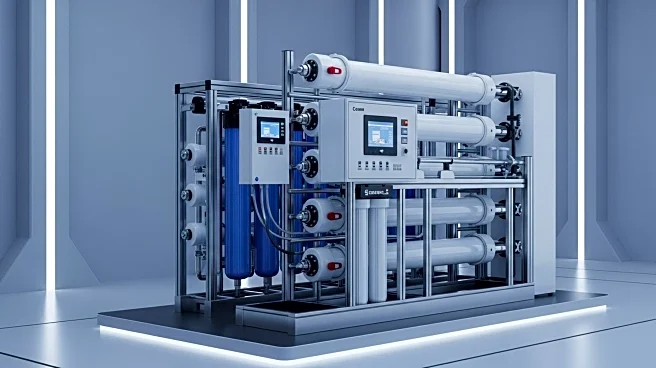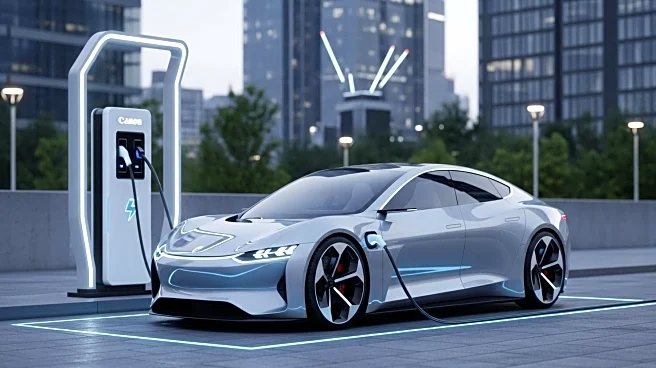What's Happening?
PPG has partnered with SAIC General Motors to launch a cleaning solvent recycling project aimed at enhancing sustainability in the automotive industry. The initiative, introduced at the 2025 CARES Conference in Suzhou, China, employs advanced distillation and purification technology to recycle up to 80% of waste solvents from automotive painting processes. This closed-loop system repurposes waste solvents as raw materials for coatings or reclaimed solvents, significantly reducing hazardous waste and CO2 emissions compared to traditional disposal methods. The project is expected to recycle over 430 tons of waste solvents annually, marking a significant step forward in sustainable automotive manufacturing.
Why It's Important?
This initiative represents a major advancement in sustainable practices within the automotive sector, potentially setting a new benchmark for environmental responsibility. By reducing hazardous waste and CO2 emissions, the project contributes to broader efforts to mitigate climate change impacts. Automotive manufacturers and suppliers stand to benefit from improved resource efficiency and compliance with stringent environmental standards. The collaboration between PPG and SAIC General Motors highlights the importance of partnerships in driving innovation and achieving shared environmental goals.
What's Next?
The project has already received recognition, winning the 2025 RESPONSIBLE CARE® Sustainability Initiative Award from the Association of International Chemical Manufacturers. As the initiative progresses, it may inspire similar projects across the industry, encouraging other manufacturers to adopt circular economy models. Stakeholders, including environmental groups and industry leaders, are likely to monitor the project's impact on sustainability metrics and its potential to influence policy and industry standards.
Beyond the Headlines
The solvent recycling project underscores the growing trend towards circular economy practices in manufacturing, which aim to minimize waste and maximize resource efficiency. This approach not only benefits the environment but also offers economic advantages by reducing material costs and enhancing operational efficiency. The initiative may also prompt discussions on the ethical responsibilities of manufacturers to adopt sustainable practices and contribute to global environmental goals.










